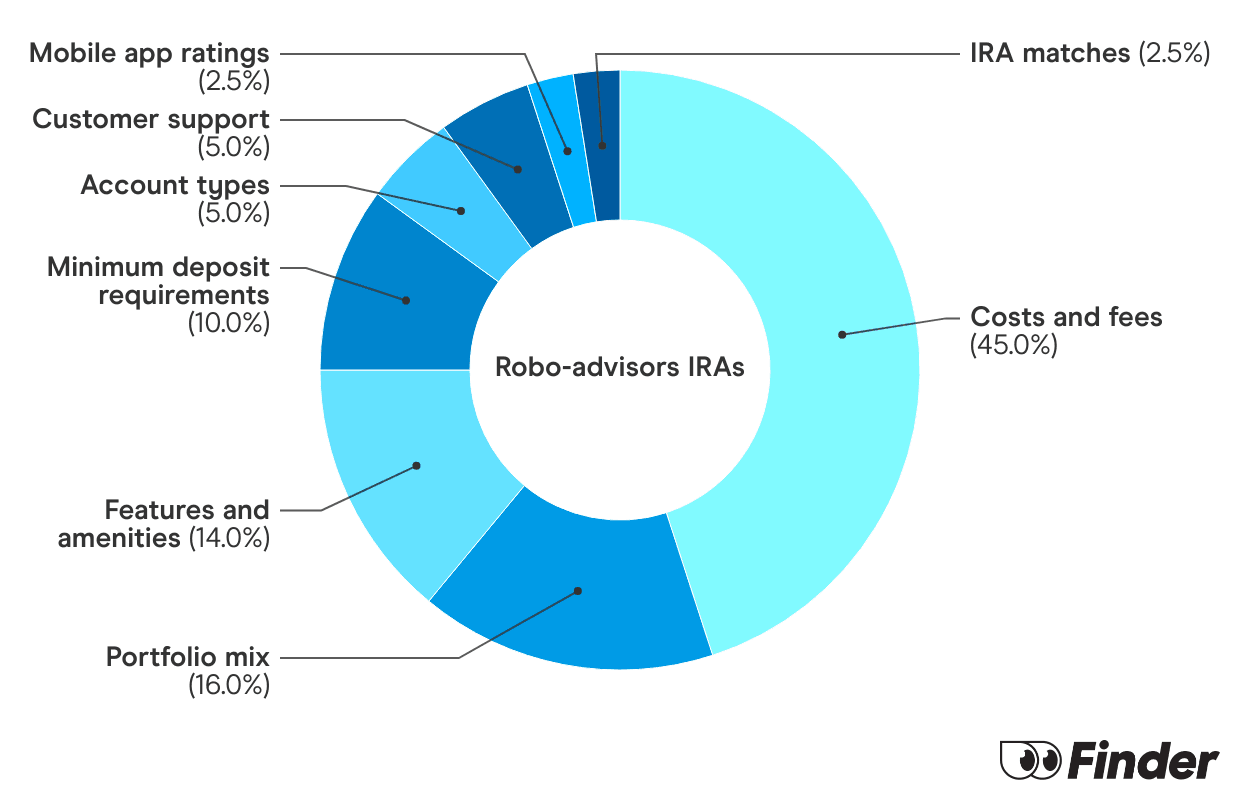A 403(b) and a Roth IRA are two investment accounts that give you tax benefits to save for retirement.
However, these accounts vary in terms of contribution limits, tax advantages and investment options, among other things. Importantly, 403(b) accounts are for employees of certain organizations. Find out more about how these accounts differ to see which is right for you.
403(b) vs. Roth IRA: A quick comparison
| 403(b) | Roth IRA | |
|---|---|---|
Where to open | Public schools and certain 501(c)(3) tax-exempt organizations offer these accounts for their employees | Brokers, banks or other financial institutions |
Investment options | An annuity contract provided through an insurance company A custodial account invested in mutual funds A retirement income account set up for church employees(1) | All assets are permitted inside an IRA except collectibles and life insurance The IRA custodian determines available investment options |
Income limits | None | Individuals filing as single and head of household. Contribute up to $7,000 if your 2025 modified adjusted gross income (MAGI) is under $150,000; individuals with a MAGI above $150,000 can contribute a reduced amount until contributions are phased out upon reaching a MAGI of $165,000Married couples filing jointly. Contribute up to $7,000 each if your MAGI is under $236,000 per year; married couples with a MAGI above $236,000 can contribute a reduced amount until contributions are phased out upon reaching a MAGI of $246,000 |
Contribution limits | $23,500 for pretax and Roth employee contributions for 2025 Employees 50 and older can save an extra $7,500 in catch-up contributions Total employee and employer contributions can’t exceed the lesser of $70,0000 or 100% of the employee’s salary | $7,000 for those under age 50 $8,000 for those aged 50 and over |
Eligibility requirements | Be an eligible employee of a 501(c)(3) tax-exempt organization, a public school system, a church or a public school system organized by Native American tribal governments(1) | No age requirements, but you need earned income to contribute Income limits apply |
Who can contribute | Employees and employers | Anyone with earned income, so long as their income doesn’t exceed a certain threshold |
Tax advantages | Tax-deductible contributions and tax-deferred growth for a traditional 403(b) plan Tax-free withdrawals in retirement for a Roth 403(b) plan | Earnings grow tax-free Tax-free withdrawals in retirement Withdraw contributions at any time tax- and penalty-free |
Withdrawal restrictions | Withdrawals before age 59.5 generally incur a 10% additional tax | Withdrawals of earnings before age 59.5 from a Roth IRA you’ve held less than five years will incur taxes and penalties (exceptions apply) Withdrawals of earnings after age 59.5 from a Roth IRA you’ve had more than five years will be subject to taxes but not penalties |
Required minimum distributions (RMDs) | Must begin taking RMDs once the account holder is age 73 | None |
FDIC insurance | None | Roth IRAs that contain bank deposits such as CDs, savings accounts or money market accounts are insured up to $250,000 |
SIPC insurance | None | SIPC insures cash and securities up to $500,000 at SIPC-member brokers |
Pros |
|
|
Cons |
|
|
403(b) vs. Roth IRA: Which one’s better?
Assuming you’re an employee of an eligible organization, a 403(b) might be better if you want to contribute more than the $7,000 allowable in an IRA in 2025 or if your employer offers a matching contribution. However, you might choose a Roth IRA if you want access to more investment options or want to avoid taking RMDs. If both options are available to you, you can choose to participate in both.
When to consider a 403(b)
A 403(b) might be a good option if:
- You want a higher contribution limit. Contribute $23,500 to a 403(b) in 2025, compared to $7,000 with a Roth IRA.
- Your employer matches your contributions. Get additional money toward your retirement savings just for contributing.
- You’re ineligible to contribute to a Roth IRA because of your income. Income limits apply to Roth IRAs but not 403(b)s. To contribute to a Roth IRA, your modified adjusted gross income (MAGI) must be under $165,000 for 2025 if you’re a single tax filer or $246,000 if you’re a married couple filing jointly.
- You want tax-deductible contributions. Contributions to a traditional 403(b) reduce your taxable income.
When to consider a Roth IRA
A Roth IRA might be a good option if:
- You’ve maxed out your 403(b). If you have more than $23,500 to save for retirement, contribute up to $7,000 in total across all your Roth IRAs and traditional IRAs in 2025.
- You want access to more investment options. Invest in traditional assets such as stocks, bonds, exchange-traded funds (ETFs) and mutual funds or alternative assets such as cryptocurrencies, real estate and venture capital.
- You don’t want RMDs. Roth IRAs don’t have RMDs like 403(b)s. Roth IRA distributions are only required upon the account holder’s death.
- You want flexible access to your contributions. While it’s generally not a good idea to withdraw retirement money early, you can withdraw your Roth IRA contributions at any time without tax or penalties.
The similarities between 403(b)s and Roth IRAs
403(b)s and Roth IRAs are both retirement accounts that can help you grow your retirement savings while benefiting from tax advantages. But that’s about where the similarities of these two accounts end.
Contribution limits, investment options and eligibility requirements vary between these two accounts.
403(b) vs. Roth IRA: Where to open these accounts
403(b)s are only available through an eligible employer, including public schools and certain 501(c)(3) tax-exempt organizations.
On the other hand, Roth IRAs are available through most banks, credit unions and brokers. The best stock trading apps offer Roth IRAs, traditional IRAs and other account types, letting you invest for different goals all under one roof.
Alternatives to 403(b)s and Roth IRAs
403(b)s and Roth IRAs are two options for your retirement savings, but, if you have different goals, you may be better served with other account types:
- Traditional IRA. Consider this type of IRA if you want to save for retirement and benefit from a tax deduction in the year you make your contributions. Since you pay taxes on your money when you begin taking withdrawals, a traditional IRA may be a good option if you think you’ll be in a lower tax bracket at retirement. The best IRA accounts offer flexible investment options, low fees, research tools and educational resources to help you invest.
- High-interest savings accounts. Consider a high-yield savings account if you want easy access to cash savings for an emergency fund.
Compare brokerages that offer IRA accounts
Narrow down top brokers by annual fee, stock trade fee and more to find the best option for your financial goals.
Compare other products
We currently don't have that product, but here are others to consider:
How we picked theseWhat is the Finder Score?
The Finder Score crunches 147 key metrics we collected directly from 18+ brokers and assessed each provider’s performance based on nine different categories, weighing each metric based on the expertise and insights of Finder’s investment experts. We then scored and ranked each provider to determine the best brokerage accounts.
We update our best picks as products change, disappear or emerge in the market. We also regularly review and revise our selections to ensure our best provider lists reflect the most competitive available.
Read the full Finder Score breakdown
Paid non-client promotion. Finder does not invest money with providers on this page. If a brand is a referral partner, we're paid when you click or tap through to, open an account with or provide your contact information to the provider. Partnerships are not a recommendation for you to invest with any one company. Learn more about how we make money.
Finder is not an advisor or brokerage service. Information on this page is for educational purposes only and not a recommendation to invest with any one company, trade specific stocks or fund specific investments. All editorial opinions are our own.
Frequently asked questions
What is better: a 403(b) or Roth IRA?
A 403(b) might be a better option if you get an employer match or have more money to save beyond the $7,000 contribution limit for Roth IRAs. However, a Roth IRA might be better if you want access to more investment options or want to avoid required minimum distributions at age 73.
Should I convert my 403(b) to a Roth IRA?
To convert a 403(b) to a Roth IRA, you either need to be 59.5 or have left your job. You might consider converting your 403(b) to a Roth IRA if your 403(b) comes with high fees or you want to access your contributions before retirement.
Should I contribute to 403(b) pretax or Roth?
You might consider a traditional 403(b) if you want to reduce your taxable income in the year you make the contribution. However, a Roth 403(b) might be more appealing if you want tax-free withdrawals in retirement.
Is a 403(b) a good retirement plan?
A 403(b) can be a solid option for a retirement plan, especially if it has low administrative costs, comes with an employer match and offers investment options that align with your goals.
Ask a question
More guides on Finder
-
Top IRA Match Accounts for 2025: Boost Your Retirement Today
Get up to a 3% IRA match with Robinhood and Acorns or up to a 1% IRA match with SoFi. See how to qualify here.
-
5 Best SEP IRA Providers of 2025
Explore the pros and cons of the best SEP IRAs and learn how to open one of these accounts.
-
7 Best Rollover IRA Accounts of 2025
Explore the advantages and shortcomings of the best rollover IRAs for beginners, mobile trading, advanced traders and more.
-
Best retirement plans of 2025
Review the best retirement plans in 2025, from employer-offered to individually opened to retirement plans for small business owners.
-
7 types of IRAs: Which is right for you?
Learn about the different types of IRAs and which is right for you.
-
2025’s Top 10 Roth IRAs: Best Picks to Build Your Retirement Savings
Check out our picks of the best Roth IRA accounts for beginners, options traders, hands-off investors and more.
-
10 Best IRA Accounts for 2025: Top Retirement Picks
Check out our picks of the best IRA accounts for beginners, options traders, hands-off investors and more.
-
How to start a solo 401(k)
A retirement plan for self-employed individuals but may come with high administrative fees.
-
Goldco Review 2025: Pros and Cons
Pros and cons to consider before you sign up for a Goldco precious metals IRA.

